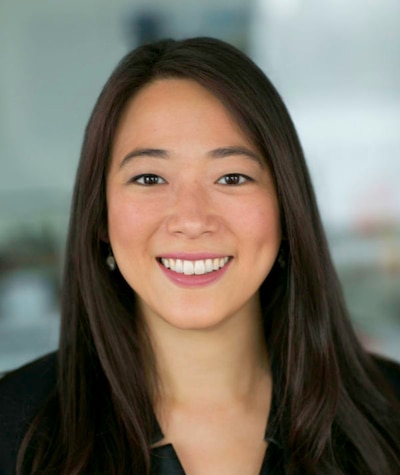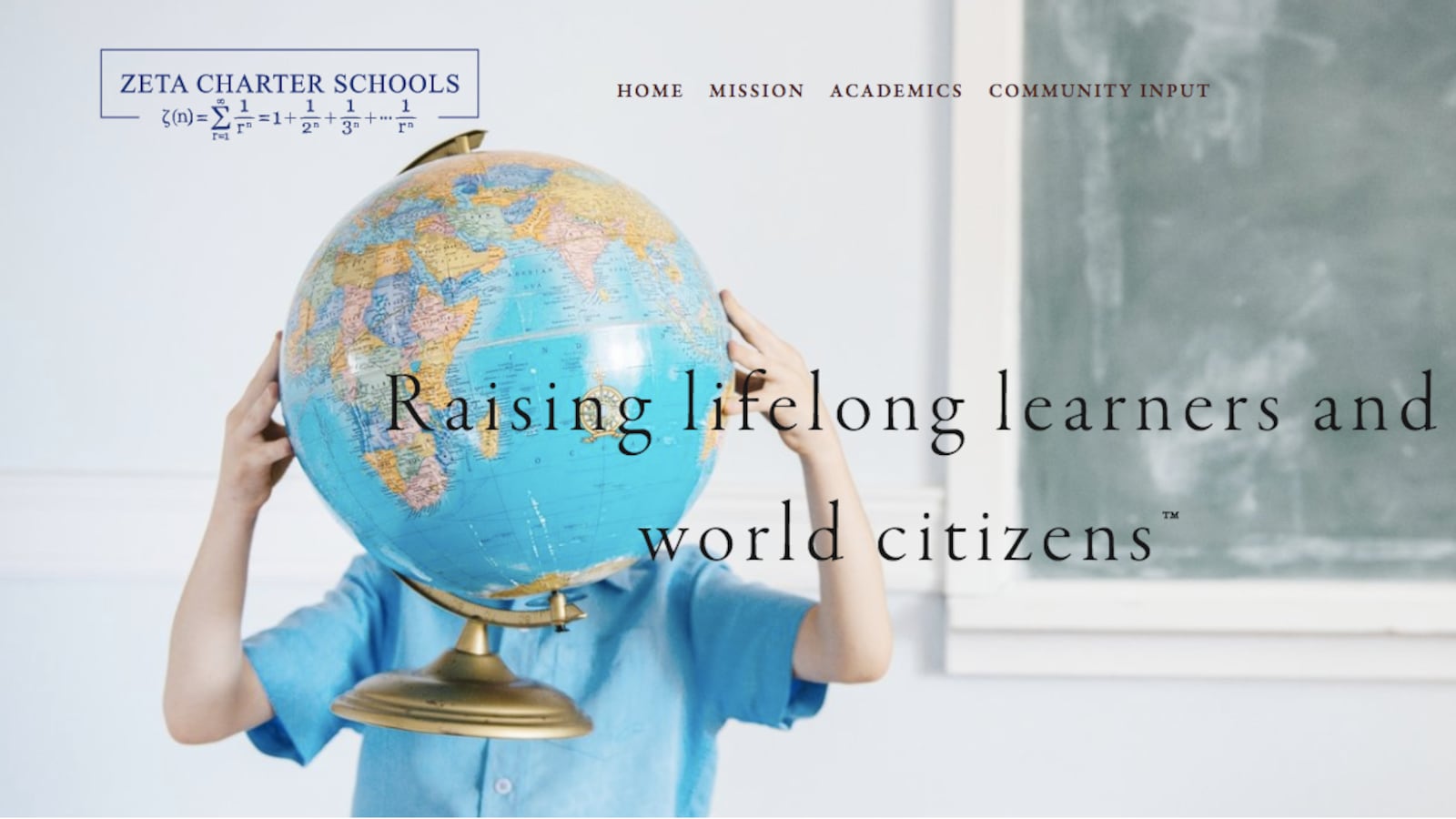As the former top lawyer for Success Academy, Emily Kim had a hand in almost every aspect of New York City’s largest and most controversial charter-school network — from negotiating lunch times for schools in shared buildings to defending Success in court.
After spending six years with Success, Kim is setting off to launch her own charter network with locations in Manhattan’s District 6, which includes Inwood and Washington Heights, and the Bronx’s District 12, which includes the south and central Bronx. Called Zeta Charter Schools, she hopes to open in 2018.

Kim is still a big believer in Success — two of her children go there, and she praised its lightening-rod leader, Eva Moskowitz, as “brilliant” — but she thinks she has something different to offer.
“I chose the best schools possible for my own children,” she said during a recent interview with Chalkbeat near her home on the Upper West Side, “but I’m still going to innovate and take it to the next level.”
The school’s co-founders — Jessica Stein and Meghan Mackay — also have ties to Success, as do several board members listed in the school’s charter application. (One of the board members, Jenny Sedlis, is a Success co-founder and director of the pro-charter advocacy group, StudentsFirstNY.)
But Kim’s vision also seems tailored to avoid some of the usual critiques of charter schools, including that they rely on harsh discipline policies. By contrast, her plan for Zeta calls for limiting the use of suspensions. She also wants her schools to be diverse, though she admits that will be difficult in residentially segregated areas like the Bronx.
A mother of three, Kim has taught in classrooms in New York City, Long Island and even West Africa. She worked on special education issues in Philadelphia district schools before heading to law school at Temple and Columbia. While working as a corporate litigator, she took on a case pro-bono for Success — and was soon offered a job as the network’s first general counsel.
Below are edited highlights from our interview with Kim earlier this month where she described how her experience as an Asian-American growing up in Iowa shaped her views on school segregation, why she believes high-stakes tests are important, and what role she sees for charter schools like hers.
Kim talked about sending her son to Success:
My child was 4 years old when all of this kind of unfolded. The first school I visited was Eva’s school, Harlem 4.
… I was so astounded by what I saw — which is the energy of the teachers. Just the level of dedication, commitment, the joy and energy of their teachers — I was blown away.
Then Eva gave a talk at the end. She was clearly a hard-driving, almost in a sense, from my perspective then, a business person. So I thought, “That’s the type of person who should be running schools.”
What’s your role going to be as you launch your own charter schools?
I’ll be the CEO. I want to take all of the great things that I saw at Success and at other schools and — like in any other enterprise — I want to take the best of the best, and I want to implement it.
And then I want to work on implementing some of the ideas that I have as well.
What’s your goal for your schools?
The number one goal is to just create additional education opportunities. As a parent, I feel this very strongly: No parent should have to send their child to a school that is not a good school.
… Our schools are going to prepare kids for the tests, and the reason is that tests are access to power. And whether you like it or not, if you want to go to college — to a good college — if you want to go to law school like I did, you take the SATs. You take the LSAT. You have to do a good job.
How are you going to measure your schools’ success?
Academic outcomes are first and foremost because truly, if I can’t hit the academic outcomes, there’s no point. I’m wasting everybody’s time and I don’t want to do that. That’s number one.
… We’re looking at going backward from very rigorous high school and college curricula, and working backwards from there. So that’s our vision when we’re establishing our schools. What do kids need to be successful in college?
And it’s not just the testing outcomes, but it’s also the soft skills that kids need in order to get there. Kids need to be able to self-regulate, and that’s got to start in elementary school, in order to be successful in middle school.
On what her schools will look like:
One of the most important elements of our school design is going to be technology.
We’re still in early days, but I’m visiting many schools across the nation that are doing things that are very exciting in technology. I’m also going to be looking in the private sector to understand what are the skills that kids need to actually be innovators. I’d love if one of our students were able to invent an app that made a difference in the world.
Many New York City schools, district and charter alike, are highly segregated by race and class. Kim spoke about the city’s segregation:
In New York City, with the exception of Success Academy and other high-performing schools, you can go to the playground and look at the skin of the children who are playing there or look around the neighborhood and the socioeconomic status of the neighborhood, and you’ll know the quality of the school. It’s a terrible, terrible situation. And that’s 60 years after Brown v. Board of Education.
And how her own background informs her views on the issue:
I grew up in Iowa. I was one of the very few students who looked like me. My dad was a math professor. There were very few African Americans, few Hispanics, and very few Asians. That was hard in a lot of ways in that I grew up with a lot of teasing and whatnot. But I also was forced to navigate a world that I didn’t understand from my own experience.
… I have the perspective that it shouldn’t [just] be the case that minorities are integrating into the larger majority population. The majority population also has to integrate themselves in the minority enclaves. As long as we have this idea that it has to go one way only, that’s perpetuating the problem.
Have the city’s charter schools done enough when it comes to integration?
… It’s just so challenging for charters because honestly, opponents of charters use the segregation idea as another weapon against charters in terms of why they’re not serving the greater good — because they’re segregated.
Well, they’re segregated because they went into areas that were low income. Unfortunately, those kids weren’t getting a good education.
So what should the mission of charter schools be?
Charter schools were largely, originally intended to bring options to children who didn’t have them — so that would be low-income [students]. That’s not really my vision of charter schools. I think that charter schools are places where innovation can happen.
… I would love for what we learn through our [research-and-development] approach to be implemented at district schools. I’m very interested in district reform. I think there are a lot of challenges to district reform, but we’d love to come up with solutions that can be applied in other contexts.
Kim explained her decision to leave Success and start her own schools:
Staying with Success surely would have been a very rich experience, but I also thought I wanted to build something and I had some ideas.
… It was a really hard decision. But I’m really glad I did and every day I’ve made that decision, I feel like I’ve made the right decision.
I guess it will be answered once I have the schools up and running. If they’re doing well, then I’ll have my answer.

